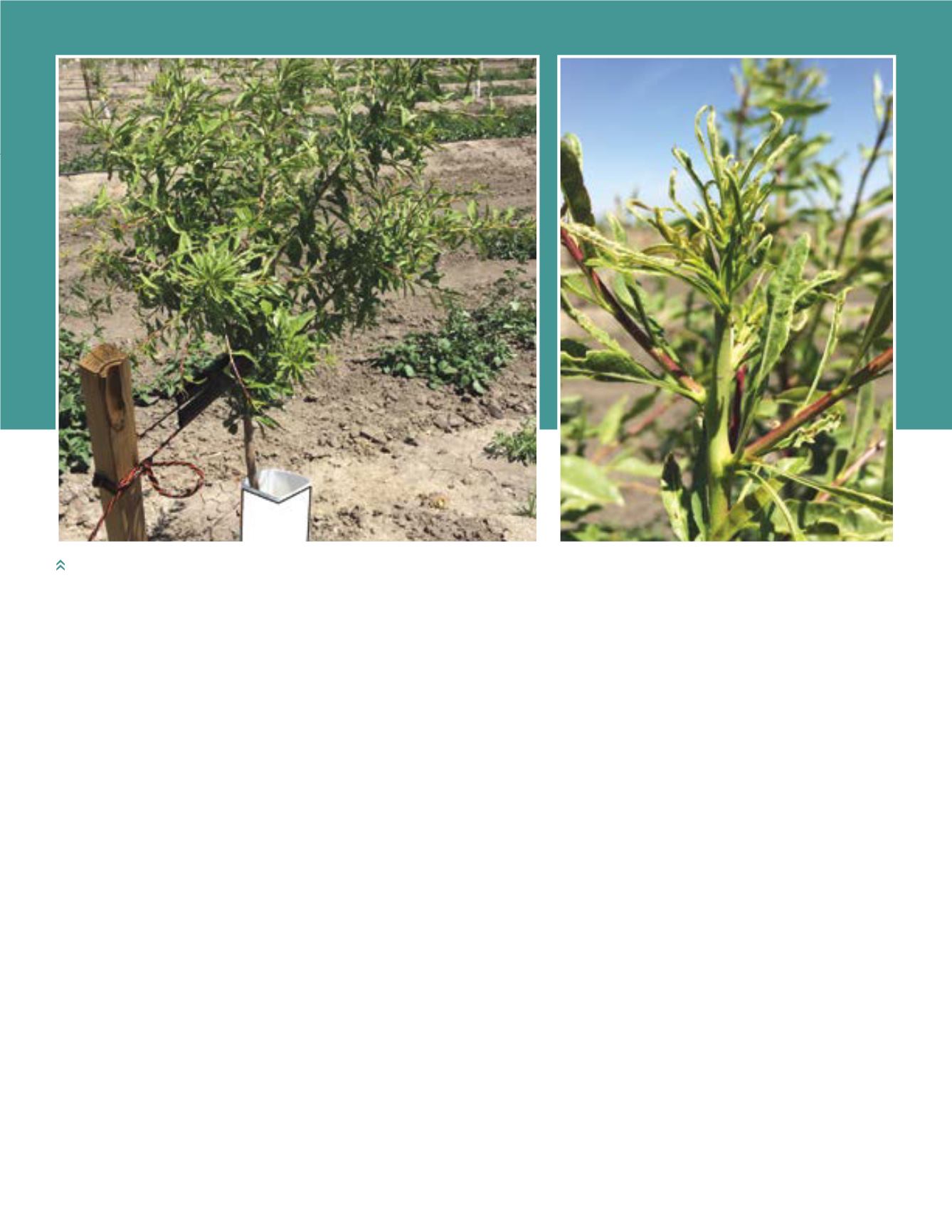
SEPTEMBER | OCTOBER 2015
Almond Facts
35
Continued on next page »
table is too shallow, this will keep the root system too wet, killing the trees.
The wetting front may be several feet higher than the standing water
level, and tree roots must be kept out of this soil. The minimal depth
to the standing water should be 7’ (wetted front no higher than 5’) and
ideally should be 10’. Keep in mind that water tables often fluctuate, and
may kill the orchard if the water rises too high. Also of concern is the
quality of the groundwater. Sample the water to determine salinity levels.
If too high, do not plant. Keep in mind that the water table may only be
present in the summer as irrigation water will accumulate on hardpan
layers (i.e. a perched water table).
There are many other site specific characteristics that should be considered
prior to planting an orchard. A consultant, local farmer, or UC farm
advisor should be included in the plans to help determine the suitability of
the parcel. This is especially true if there are no orchards in the area.
Rootstock Selection -
“The Best Defense.”
We are very fortunate to have a wide diversity of rootstocks available in
California. Proper rootstock selection can help mitigate soil problems
and provide a better chance of optimal production. When selecting a
rootstock, it is important to have the soil, water, and nematode analysis
as these factors will determine rootstock selection. Not all rootstocks are
offered by all nurseries, so, in some cases, the rootstock of choice may
determine the nursery.
A first leaf tree showing severe zinc deficiency due to a high soil pH (>8.5). “Pushing the limits” when planting almond trees often leads to increased operational
costs and risk of tree loss.
Soil and water salinity and pH should be a
primary consideration when selecting a rootstock.
With soil or water containing high sodium or
chloride, field and greenhouse research suggests
that peach-almond hybrids (Hansen 536, Brights
Hybrid, Cornerstone, etc.), ‘Empyrean-1’,
and ‘Viking’ rootstock are more tolerant than
Nemaguard, Lovell, and Krymsk-86. In alkaline
soils, field observations suggest that peach-
almond hybrids are more vigorous, and often
show less signs of micronutrient deficiency.
Work is still being done in high boron soils, but
preliminary data suggest that peach-almond
hybrids may be more tolerant.
Ring, root lesion, and rootknot nematodes are
the major nematodes of concern in almond
orchards. Historically, rootknot nematode was
a significant problemuntil resistant rootstocks
were developed. As the name suggests, rootknot
nematode causes galls or knots to form on the
roots, leading to reduced productivity and low
vigor. Many –but not all- modern rootstocks
are resistant to rootknot nematode. Rootstocks
‘Lovell,’ ‘Krymsk-86,’ and ‘Paramount,’ or
‘GF677’ are known to be susceptible to this


